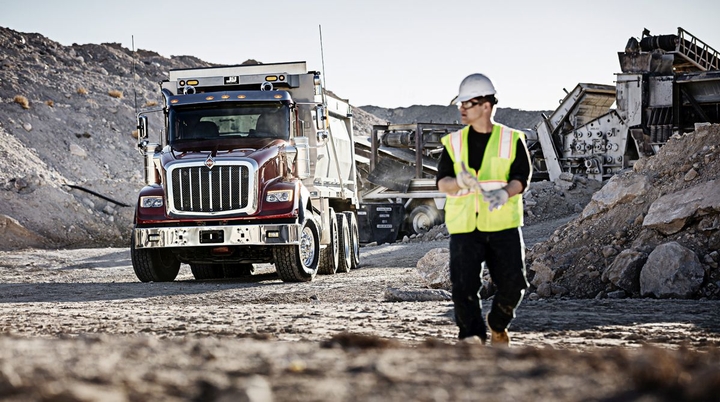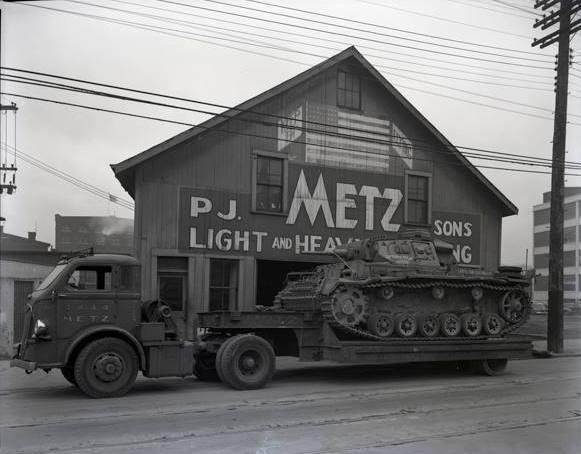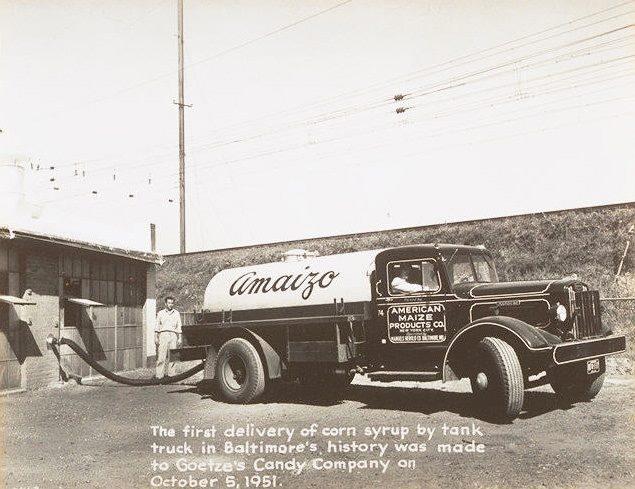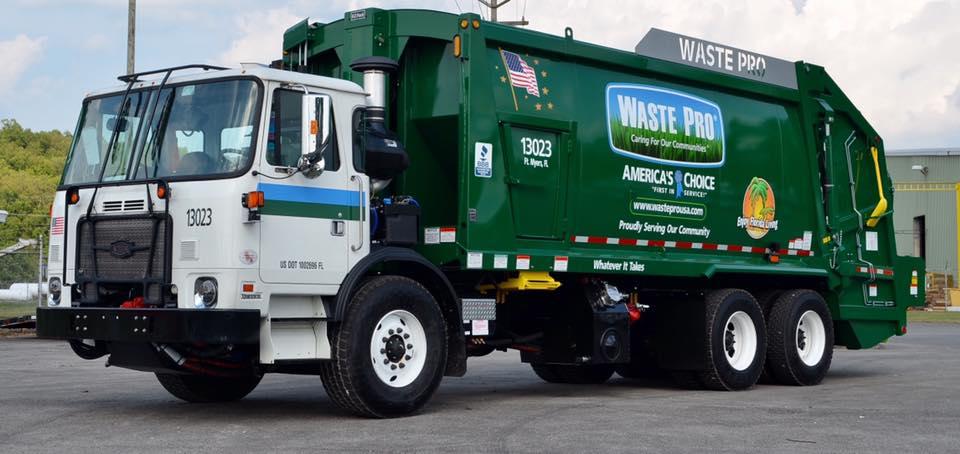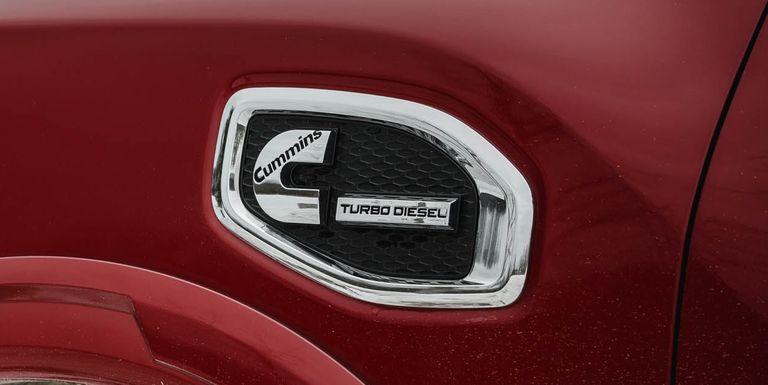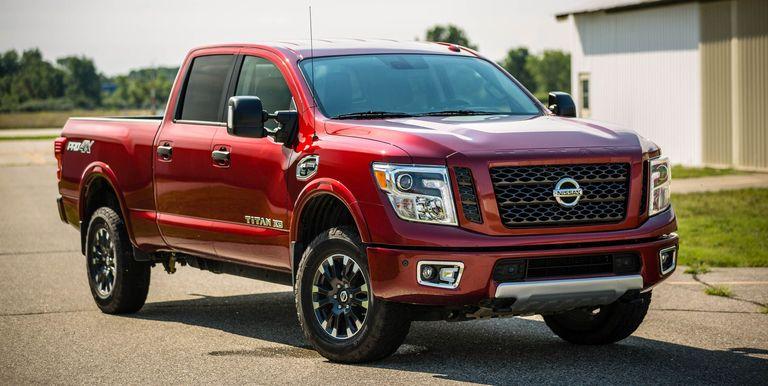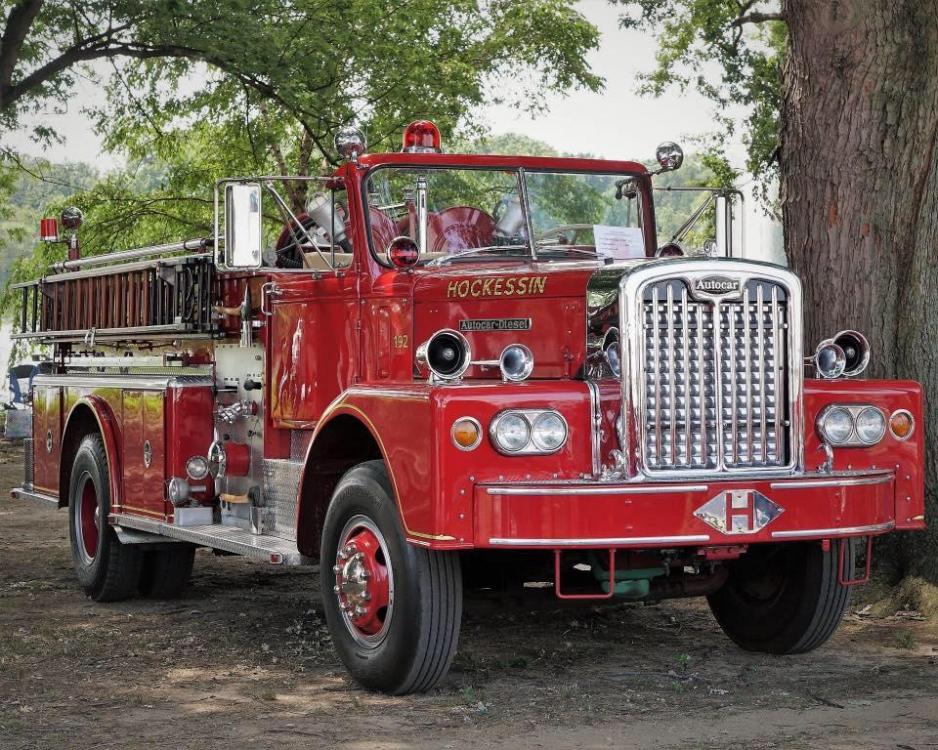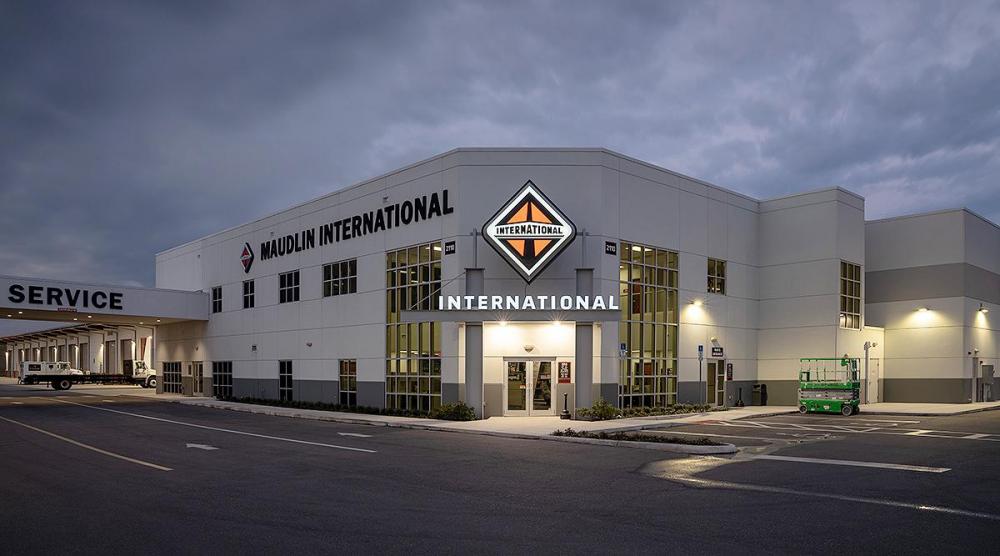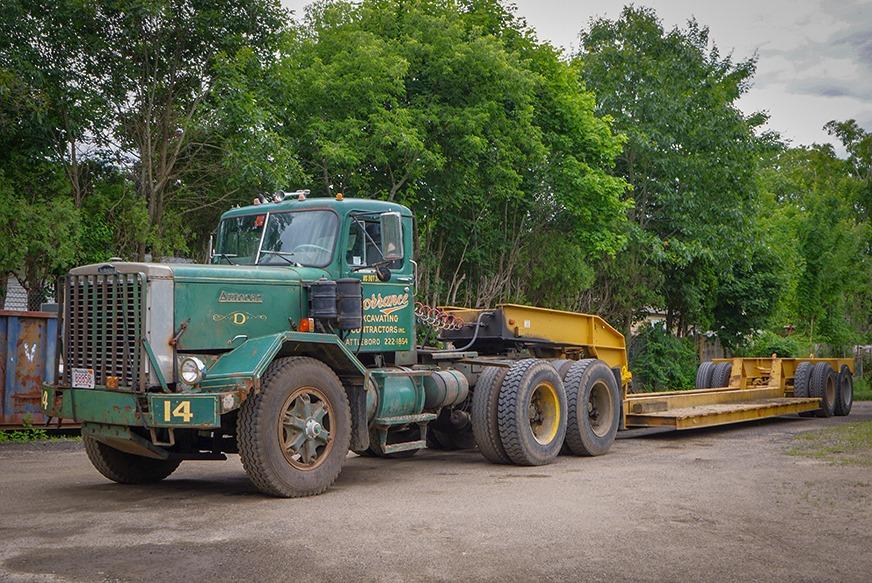
kscarbel2
Moderator-
Posts
18,927 -
Joined
-
Days Won
114
Content Type
Profiles
Forums
Gallery
Events
Blogs
BMT Wiki
Collections
Store
Everything posted by kscarbel2
-
Navistar launches hotline for International dealers
kscarbel2 replied to kscarbel2's topic in Trucking News
Navistar's Severe Service Team Launches Engineering Hotline Heavy Duty Trucking (HDT) / August 12, 2019 Providing an added margin of expertise for complex vocational truck sales, Navistar’s Severe Service team recently launched an Application Engineering Hotline that gives International dealers direct, rapid access to the product experts who designed the vehicles. “Because of the highly customized and often complex configurations our severe service customers require, our dealers’ support for those customers can be enhanced through direct access to Navistar application engineers,” said Mark Stasell, vice president, Vocational Truck, Navistar. “The Application Engineering Hotline supports dealers’ strong relationships with customers by giving them the ability to get direct, expert advice when they need it.” Rolled out to dealers through visits from the Severe Service team, as well as the dealer network’s online portal, the hotline can be reached through a simple phone call from any International dealer. Phone calls are immediately directed to an application engineer who listens to the dealer’s request and offers support moving forward. During an initial pilot phase conducted earlier this year, the hotline quickly amassed well over 100 calls from dealers. Typical phone calls ranged from general questions on severe service truck configurations to advanced, application-specific questions from customers. Some dealers also reached out simply seeking an update on their orders or special quotations. No matter how big or small the issue, each phone call was received and answered quickly and accurately to provide dealers with full support. “There are many times in a given day when a dealer sales person needs an update or has a specific customer question that they need to get answered rapidly,” said Melissa Gauger, chief product specialist, Severe Service, Navistar. “How quickly and accurately it gets answered could have a big impact on that customer’s decision to purchase an International truck. By having our application engineers available to help through this easily accessed, simple-to-use hotline, we’re putting our dealers’ sales teams in the best possible position to win.” Since the launch of the hotline, dealer feedback and customer results have been continuously measured to determine the speed and success of responses. So far, the results have been extremely encouraging, according to the manufacturer, with steady increases in the number of dealers using the hotline and the number of calls received each day. Maudlin International Truck and Trailer, based in Orlando, Florida, was one of the first International dealers exposed to the hotline, and has since used it for sales growth. In fact, this new tool has been so successful that the Severe Service team is looking at expanding the hotline to support Navistar’s other products. “Since launching the hotline, we have received such positive feedback that other product teams across the company want to use the same process for their segments,” Gauger continued. “It’s great to see that type of receptivity to the hotline, and we’re looking forward to continuing to provide this support for our Severe Service products, while helping different product teams across Navistar launch their own.” . -
Volvo introduces new Mack “Anthem” on-highway tractor
kscarbel2 replied to kscarbel2's topic in Trucking News
In my mind, the three most unattractive (hideous) looking trucks today are the 5700XE, Anthem and W990. -
Volvo introduces new Mack “Anthem” on-highway tractor
kscarbel2 replied to kscarbel2's topic in Trucking News
-
Politicians hand Nikola $1.7 million in free taxpayer money rather than CEO Trevor Milton visiting a bank or dipping into his personal wealth. Where's the justice in that?
-
Nikola lands $1.7 million grant to advance fuel cell research Commercial Carrier Journal (CCJ) / August 7, 2019 The U.S. Department of Energy has awarded Phoenix-based Nikola Motor Company a $1.7 million grant to advance its research into fuel cell membrane electrode assembly (MEA). Nikola’s Executive Vice President of Hydrogen & Fuel Cell Technologies Jesse Schneider said the award provides an opportunity for the Nikola team to leverage expertise in academia and resources within the DOE Fuel Cell Consortium for Performance and Durability “to accelerate a breakthrough that will benefit the entire hydrogen and fuel cell industry and community.” The joint grant was funded by the US Department of Energy’s Energy Efficiency and Renewable Energy (EERE) Transportation Office under the recently announced FY19 Commercial Trucks and Off-Road Applications FOA. Nikola is pursuing a new approach and unique MEA architecture to satisfy the high-power output and durability requirements of heavy-duty applications with its academic partners: Carnegie Mellon University Prof. Shawn Litster, Northeastern University Prof. Sanjeev Mukerjee and Georgia Institute of Technology Prof. Younan Xia. In this project, Nikola will bring together advanced concepts in catalysts, ionomers, proton exchange membranes, and gas diffusion layers within a robust MEA by using appropriate, scalable fabrication methods. Nikola’s hydrogen station partner NEL Hydrogen of Oslo, Norway was also awarded a $2 million award from the DOE. Nikola executives are serving as the technical lead on that project as well. There are currently more than 14,000 Nikola Class 8 trucks on order. The Nikola trucks feature up to 1,000 horsepower and 2,000 ft-lbs of torque. Nikola recently announced a battery-electric vehicle option for the urban, short haul trucking market. Nikola’s trucks will be manufactured in Coolidge, Ariz. Testing will begin on Arizona roads this year with full production expected in late 2022.
-
A U series Autocar carries a German Panzerkampfwagen (PzKw) III back for interrogation. Always Up - Autocar Trucks .
-
Oct 5, 1951-- Baltimore's very first delivery of corn syrup via tanker truck was delivered to Goetze's Candy Co. located at 3900 East Monument Street. Yep, Our beloved Caramel Creams need "corn syrup" to be born. Yummy! Always Up - Autocar Trucks .
-
Heavy Duty Trucking (HDT) / August 7, 2019 Cylinder deactivation technology is likely to be a major design change in the next generation of heavy-duty diesel engines looking to meet stricter greenhouse gas/fuel efficiency regulations. As its work on this technology progresses, Jacobs Vehicle Systems has entered into a collaboration agreement with Tula Technology, an internal combustion controls company. The two businesses will work together to enable Jacobs to further develop cylinder deactivation technologies, which reduce engine fuel consumption and emissions. Jacobs announced its Cylinder Deactivation (CDA) technology for medium- and heavy-duty commercial vehicle engines in 2018. Tula has licensed its Dynamic Skip Fire (DSF) technology for major automotive OEM gasoline applications. According to Jacobs, the new partnership will use Tula’s DSF controls technology to support Jacobs’ expertise in diesel deactivation hardware development. “Vehicle manufacturers are looking for new and improved technologies to comply with stricter legal limits on CO2 and NOx emissions," explained Robb Janak, director, new technology, Jacobs Vehicle Systems. "New test measures, such as Real Driving Emissions and CARB Low Load Cycle for heavy-duty trucks, are encouraging the adoption of smarter technologies that address these requirements. Cylinder deactivation is a great solution, technically proven, and cost effective.” Jacobs’ CDA, cylinder deactivation mechanisms, originally designed for the company’s High Power Density (HPD) engine brake, are used in the valvetrain to disable the opening of the intake and exhaust valves. The hydraulically activated mechanism is integrated in a collapsing valve bridge system for overhead camshaft engines or with a collapsing pushrod system for cam-in-block engines. When this is combined with disabled injection in selected cylinders, multiple cylinders can be deactivated as needed. At low engine loads with three of six cylinders deactivated, fuel consumption can be improved by up to 20%. Jacobs said its CDA technology reduces emissions by achieving higher exhaust temperatures, thus maintaining aftertreatment temperatures for optimal efficiency of SCR (selective catalytic reduction) systems, even when the engine is in idle or low load operation. CDA also enables faster warm-up after engine start-up of the aftertreatment system and minimizes cooling of aftertreatment during coasting. CDA additionally reduces camshaft friction, reduces pumping losses in part-load conditions, and can reduce or eliminate use of the intake throttle, all of which yields overall improvements in fuel consumption while increasing exhaust temperatures. Tula has developed an infinitely variable cylinder deactivation system, integrating advanced digital signal processing and software with sophisticated engine control algorithms. This technology reduces fuel consumption of gasoline engines by 6-15% on real world drive cycles; the collaboration with Jacobs aims to enable Jacobs to develop and demonstrate deactivation hardware required for diesel engines. The Tula DSF system makes dynamic firing decisions based on how much torque is requested and then selectively choosing which cylinders will be active or deactivated to meet performance demand. When more torque is required, the firing density increases, and when there is less demand for torque, firing density decreases. This means the control algorithm effectively creates an engine with optimal displacement for the torque required. Tula’s control system also ensures production level noise, vibration and harshness in a vehicle, the company said. By having the ability to select which cylinders are fired every engine cycle, and by taking into account the frequencies and amplitudes of vibration produced by cylinder combinations, the control algorithm determines the cylinder firing sequences that deliver smooth operation and reduced cost at the fuel pump.
-
Yahoo Finance / August 7, 2019 The U.S. Treasury Department's Office of Foreign Assets Control (OFAC) on Aug. 6 announced a $1.7 million settlement agreement with Bellevue, Washington-based PACCAR to settle allegations that the truckmaker's European subsidiary illegally engaged in the sale of 63 trucks from Europe to Iran between October 2013 and February 2015. According to OFAC, DAF Trucks in Eindhoven, the Netherlands, sells trucks through a network of more than 300 independent dealers. The agency said the U.S. Iranian Transactions and Sanctions Regulations (ITSR) violations specifically involved orders that were received by DAF from dealers in Hamburg (51 trucks) and Frankfurt (two trucks), Germany, and Sofia, Bulgaria (10 trucks). The trucks were then resold to customers in Iran. OFAC noted that the truck sales were valued at about $5.4 million. OFAC said PACCAR could have received a base penalty amount of $2.7 million for the alleged violations, but the agency considered a number of mitigating factors in the case, including that PACCAR disclosed the violations and DAF, upon learning of three dealers' activities, launched an investigation, fired the responsible employees and since 2015 mandated in-person and annual compliance training for its headquarters and subsidiary staff. DAF also established a corporate policy that allows only direct sales agreements to final end customers and banned the resale of new trucks acquired through those agreements unless it approves an exception. In addition, PACCAR's Dutch truck manufacturer sent certified letters to its dealers reminding them of their obligation to comply with U.S. and other trade sanctions. OFAC said both PACCAR and DAF cooperated with the investigation, adding that the "apparent violations constitute a non-egregious case." However, the agency warned this case demonstrates that foreign subsidiaries and their U.S. parent corporations must comply with the U.S. Iranian Transactions and Sanctions Regulations or risk exposure to civil penalties.
-
Ford Trucks International Press Release / August 7, 2019 . 1507940147251-drlcss.mp4
-
She sure does shine up nice. Thank you Waste Pro for your valued business! Great looking Goliath G400. Always Up - Autocar Trucks .
-
Navistar Unveils Strategic Plan to Increase Market Share
kscarbel2 replied to kscarbel2's topic in Trucking News
Beautiful dealership. -
Nissan Is Getting Rid of the Titan XD's Cummins Diesel Engine for 2020 Charles Dryer, Car & Driver / August 6, 2019 Nissan will stop production of the Titan XD with the 5.0-liter Cummins diesel V-8 in December 2019. The regular-cab versions of both the Titan and the Titan XD are also casualties of a 2020 refresh that will be revealed later this year, Nissan spokesperson Wendy Orthman confirmed to C/D. Nissan claims this is a move to "focus on the heart of the truck market." The XD diesel model attempted to bridge an apparent gap between half-ton and three-quarter-ton pickup trucks. However, its lackluster performance numbers, tow ratings comparable to half-ton pickups, and hefty price premium over the gas motor (the XD with this 5.6-liter V-8 will continue for 2020) made the diesel XD an answer to a question that we assume few pickup-truck owners were asking. The company sold 52,924 Titans in 2017, 50,459 in 2018, and 20,268 through July 2019, but Nissan does not report sales figures for the diesel motor specifically. We had a poor experience with a Cummins-equipped Titan XD during our long-term evaluation. Our long-term 2016 Titan XD left us stranded twice within 40,000 miles. When it was running, we did not appreciate the diesel clatter, thirst for diesel exhaust fluid, and the powertrain's general lack of refinement. Nissan states, though, that reliability issues were not a factor in the decision to drop the diesel. Nissan still has its work cut out to keep the Titan competitive in the truck wars. GM has new metal this year with the Silverado and Sierra, Ford's F-150 is as strong as ever, and our favorite, the Ram 1500, is the sweetheart to beat. Even Toyota has a new Tundra on the way. We will learn more about what the Titan's 2020 refresh has in store sometime later this year. .
-
Hockessin Fire Company - Station 19 - Hockessin, Delaware 1967 Autocar / Hahn 1250gpm 500gwt Photo taken by James Wensell this past Sunday at the annual Cradle of Liberty chapter of SPAAMFAA muster in Pennsauken, New Jersey Always Up - Autocar Trucks .
-
Transport Topics / August 6, 2019 BOULDER, Colo. — Navistar International unveiled a strategic plan Aug. 6 that company leaders said will help it expand its market share, sharpen its focus on customers and reduce the time it takes to repair trucks through a strengthening of its existing dealer network. “We are at a point where we have revamped our entire product portfolio, which I always consider the point to be competitive in the marketplace — and we are competitive,” said Friedrich Baumann, Navistar President for Aftersales and Alliance Management, during a meeting with reporters here. “Now we need to create the right services with this product and it’s all about growth and regrowth of our business. We have to change our mindset to make the long view to get us to where we want to be in three to five years from now.” He pointed to two recent moves the company has made to help it achieve that goal: On August 26, Navistar will open a new 300,000-square-foot parts distribution center near FedEx’s World Hub in Memphis, Tennessee, allowing for parts delivery anywhere in the country, often in less than 12 hours. On August 1, the company launched a new service network with Love’s Travel Centers and Speedco that will provide warranty and other repairs to 500 service bays nationwide, and access to an additional 1,300 technicians. The company provided data that showed industrywide, just 45% of trucks that are in for service are back on the road within 24 hours. Baumann stressed that increasing that turnaround time to less than 24 hours will improve customer loyalty by increasing the amount of time the truck is on the road. The company noted that predictive analytics will help, by determining in advance when a truck needs to visit the shop, reducing the amount of time it takes to get the needed parts and complete repairs. In addition, Baumann told Transport Topics that by strengthening its existing dealer network, Navistar can further improve its relationship with its customers. Baumann also noted that Navistar is on track to increase its new truck market share by the end of its fiscal year in October to more than 18%, and is pushing to increase that share to at least 25% by 2025. .
-
'59-'62 G model Mack in So Cal (save it from scrap!)
kscarbel2 replied to waukesha's topic in Trucks for Sale
Please........someone save that truck! G models are something very special, and G model day cabs are extremely rare. -
Reuters / August 6, 2019 WASHINGTON - White House trade adviser Peter Navarro on Monday called on the U.S. Federal Reserve to cut interest rates by another three-quarters of a point to full point by end of year to bring U.S. rates into line to with rates elsewhere. “The Federal Reserve before the end of the year has to lower interest rates by at least another 75 basis points or 100 basis points to bring interest rates here in America in line with the rest of the world,” Navarro says. “We have just too big a spread between our rates and that costs us jobs.”
-
Goldman Sachs sees no trade deal before 2020 election, now expects 3 rate cuts Reuters / August 6, 2019 Goldman Sachs said it no longer expects the United States and China to agree on a deal to end their prolonged trade dispute before the November 2020 presidential election as policymakers from the world’s largest economies are “taking a harder line”. The bank now expects two back-to-back rate cuts from the U.S. Federal Reserve (Fed) “in light of growing trade policy risks, market expectations for much deeper rate cuts, and an increase in global risk related to the possibility of a no-deal Brexit”.
-
Mack Rail – The Locomotives
kscarbel2 replied to kscarbel2's topic in Modern Mack Truck General Discussion
I years ago wrote on Mack rail because I thought placing this history on BMT would prevent this knowledge from being forgotten/lost. https://www.bigmacktrucks.com/topic/39989-mack-rail-–-the-rail-cars/ https://www.bigmacktrucks.com/topic/33469-mack-rail-–-the-rail-cars/ https://www.bigmacktrucks.com/topic/33544-mack-rail-–-global-sales/?/topic/33544-mack-rail-global-sales/?hl=acx https://www.bigmacktrucks.com/topic/33657-mack-rail-–-the-locomotives/?/topic/33657-mack-rail-the-locomotives/?p=218642 https://www.bigmacktrucks.com/topic/33763-mack-rail-sperry-rail-service-the-oldest-operator-of-mack-rail-buses/?/topic/33763-mack-rail-sperry-rail-service-the-oldest-operator-of-mack-rail-buses/?hl=fcd -
US missiles are for defending U.S. soil. So why would the US defense secretary suggest placing missiles on the other side of the world from where most US soil is? This is how wars get started.
-
China to counter U.S. deployment of intermediate-range missiles in Asia Reuters / August 5, 2019 BEIJING - China will take countermeasures if the U.S. deploys intermediate-range missiles in Asia, a Chinese foreign ministry official said on Tuesday. Fu Cong, director general of the foreign ministry’s arms control department, made the comments in Beijing at a press briefing. U.S. Defense Secretary Mark Esper said on Saturday in Australia that he was in favor of placing ground-launched, intermediate-range missiles in Asia relatively soon, possibly within months.
-
We found it: The source of the term "#badass". It's this #wicked #AutocarDC used by Dorrance Excavating in Norton, Massachusetts, to move their heavy equipment. And, if you check out http://dailydieseldose.com/autocar-mondays-dorrace-recycling/ you'll see more pics of this truck, thanks to our friend and master photographer Ryan Pedone. .
-
https://www.govdeals.com/index.cfm?fa=Main.Item&itemid=18&acctid=9123
BigMackTrucks.com
BigMackTrucks.com is a support forum for antique, classic and modern Mack Trucks! The forum is owned and maintained by Watt's Truck Center, Inc. an independent, full service Mack dealer. The forums are not affiliated with Mack Trucks, Inc.
Our Vendors and Advertisers
Thank you for your support!


